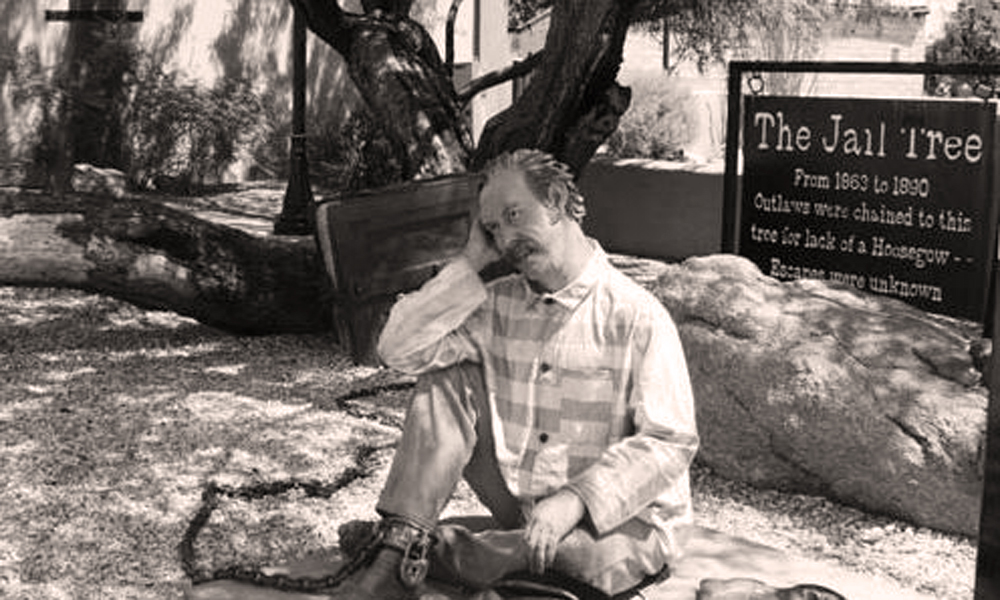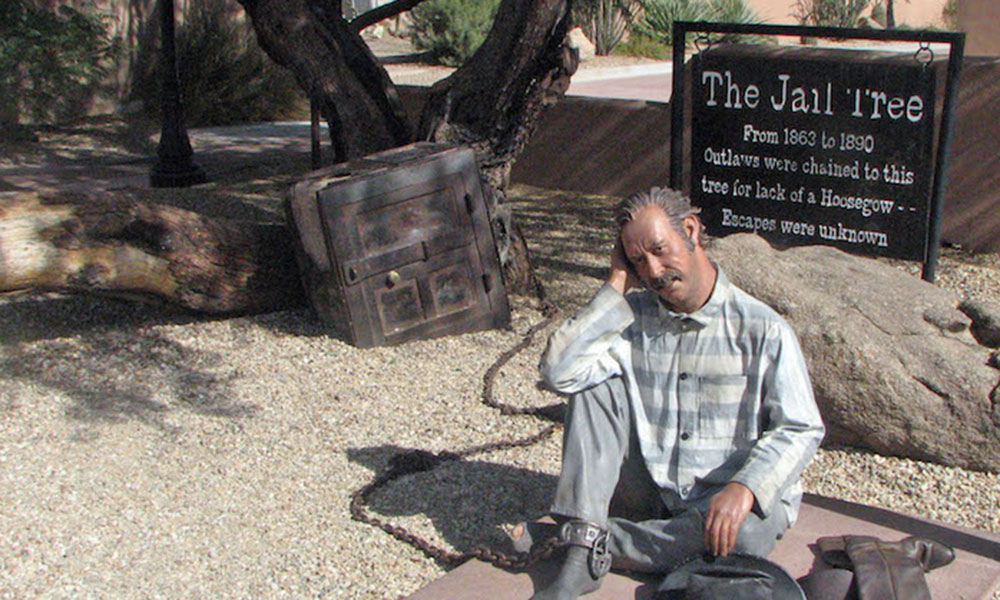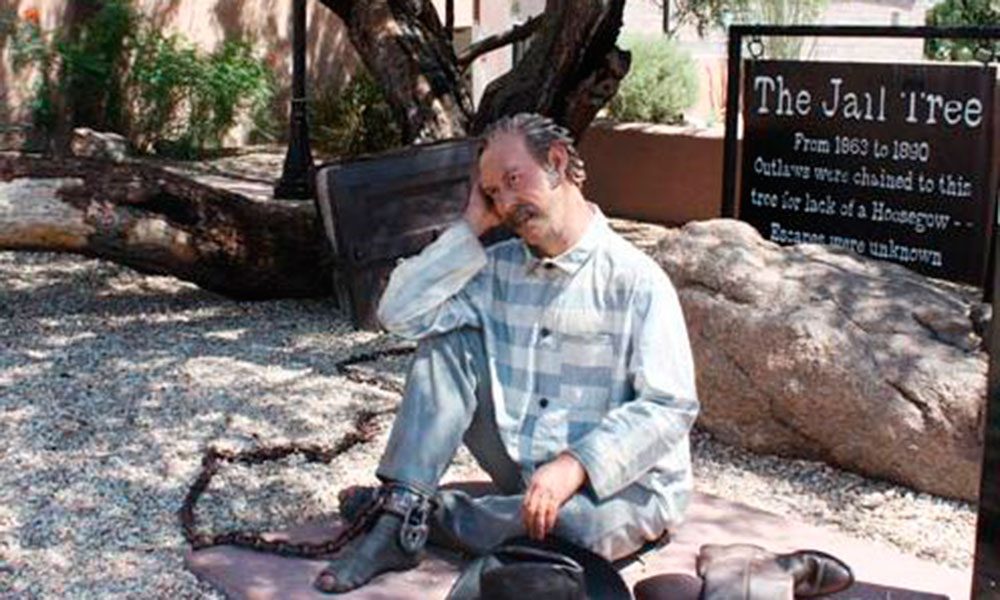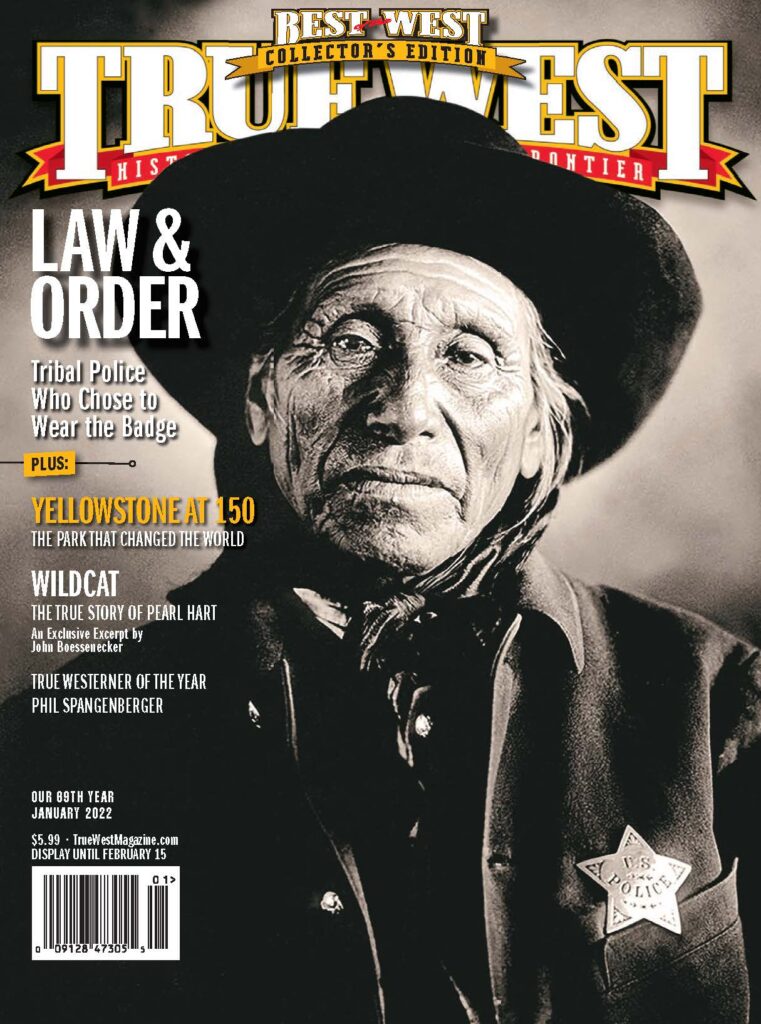
Hollywood movie sets built their jails pretty similar. They always had a window in back because the script called for a crony to slip them a pistol or tie a rope around a bar, take a dally around his saddle horn and yank it out. I’ve never seen a slop bucket in the movie jails.
In reality here were as many different kinds of jails as there were towns and some were quite primitive. I’ve seen a number of old jails that had no outside windows at all. Probably because, as we’ve seen, it was too easy for a crony to slip a gun through the bars.
Some jails were pretty elaborate. In 1874 the citizens of Helena, Montana spent $11,000 to build a jail that would be the envy of jail keepers everywhere. It was a tall red-brick structure with six cells, an exercise hall along with a kitchen and a bunk house for the guards.
The venerable jail in Truckee, within California’s Sierra Nevada, built in 1875 was a sturdy strongbox of brick and steel with no windows unless you count the small air vents for each cell. It was used until 1964.
Most jails were very crude. In the Southwest they were made of adobe and one could dig his way out. The cliche of the jail bars, with the big window is quite unrealistic. Most jail windows had corrugated steel, crossways, so that it let only a fraction of light in. In the early days of the west, prisoners were tied to trees. The Wickenburg Jail Tree still exists as a tourist attraction. Some sheriffs even resorted to tying prisoners to logs or telegraph poles. In Lincoln, New Mexico, Billy the Kid and some of his outlaw friends were kept in a pit jail, literally a hole in the ground with wood slats across the top and a trap door that the jailer sat on. It was pitch black down in that hole.
During rodeo week in the 1950s in Payson, Arizona, the town marshal would handcuff the drunken revelers to any convenient tree or sign post. His wife and daughter would patrol the area to see when they were sober then she’d turn them loose, thus making room to cuff another drunk to the make-shift calaboose.






